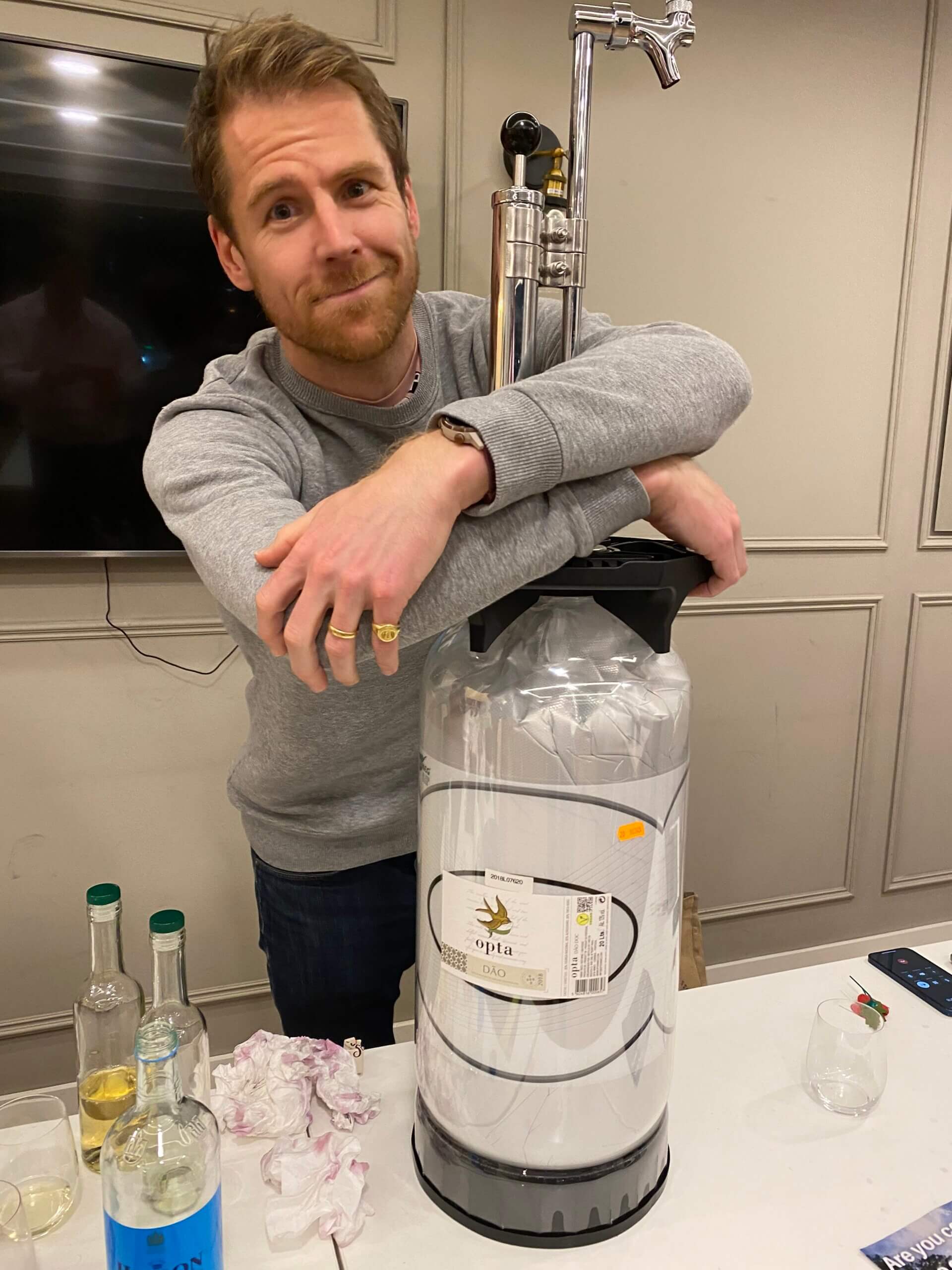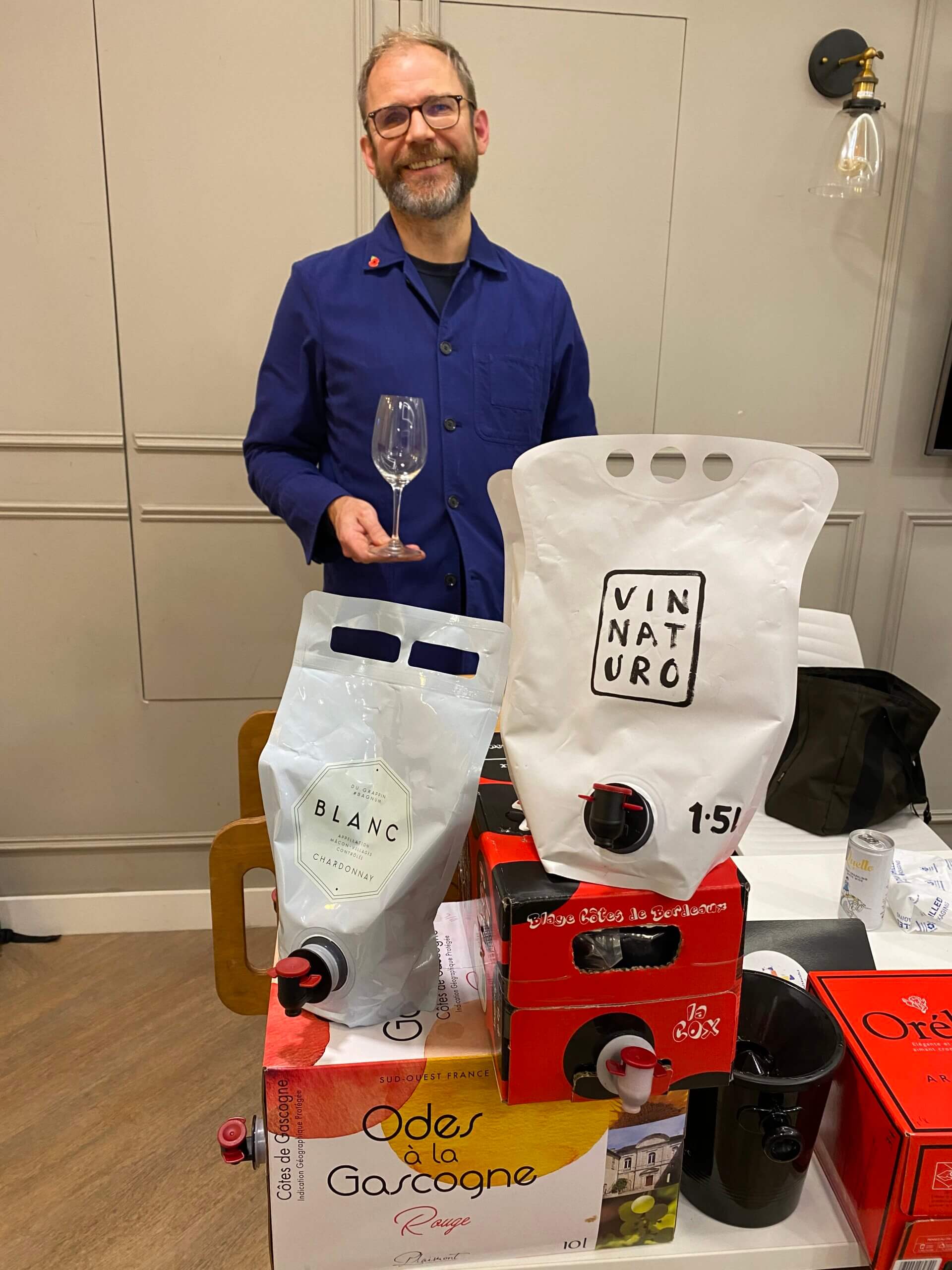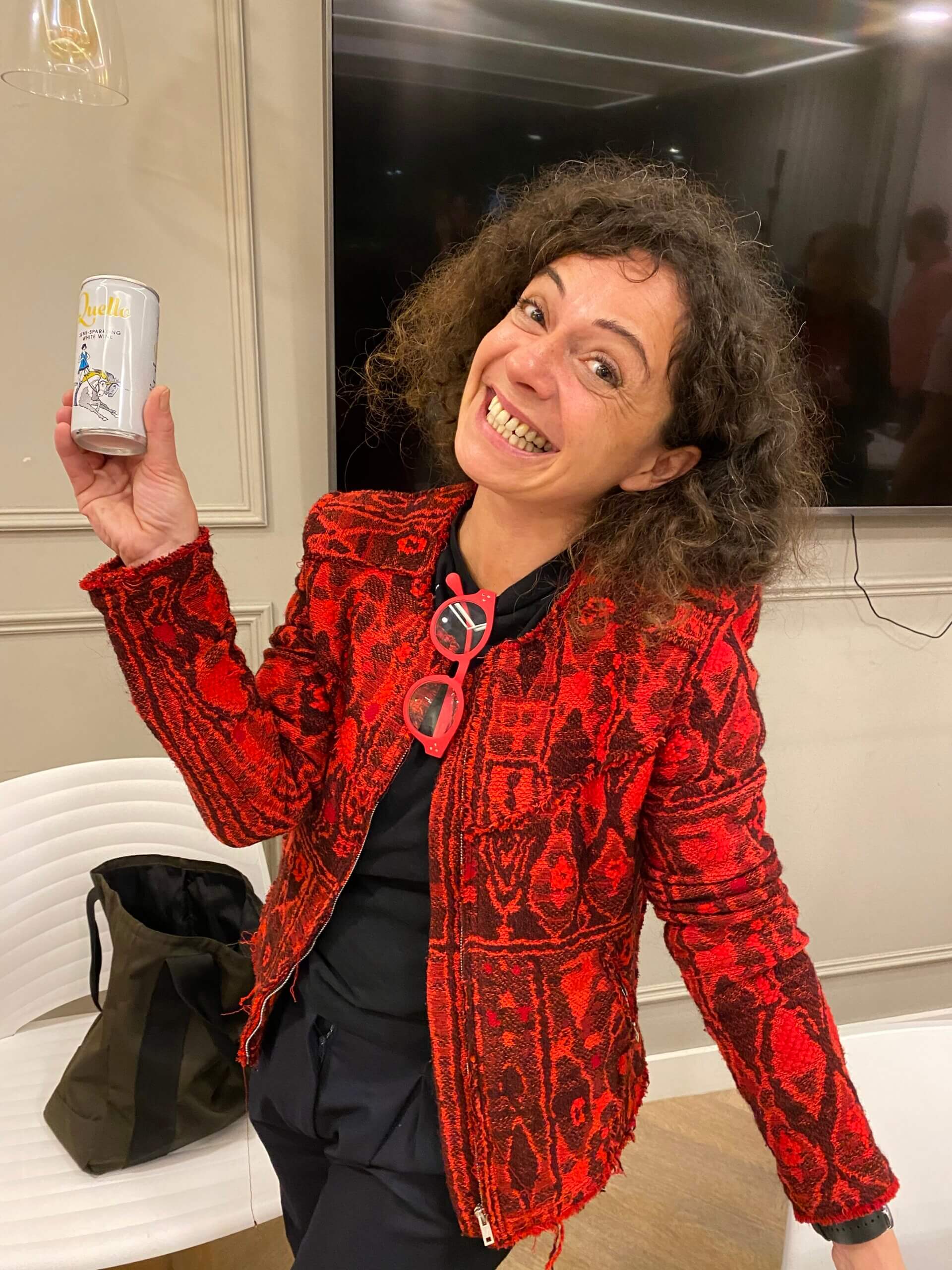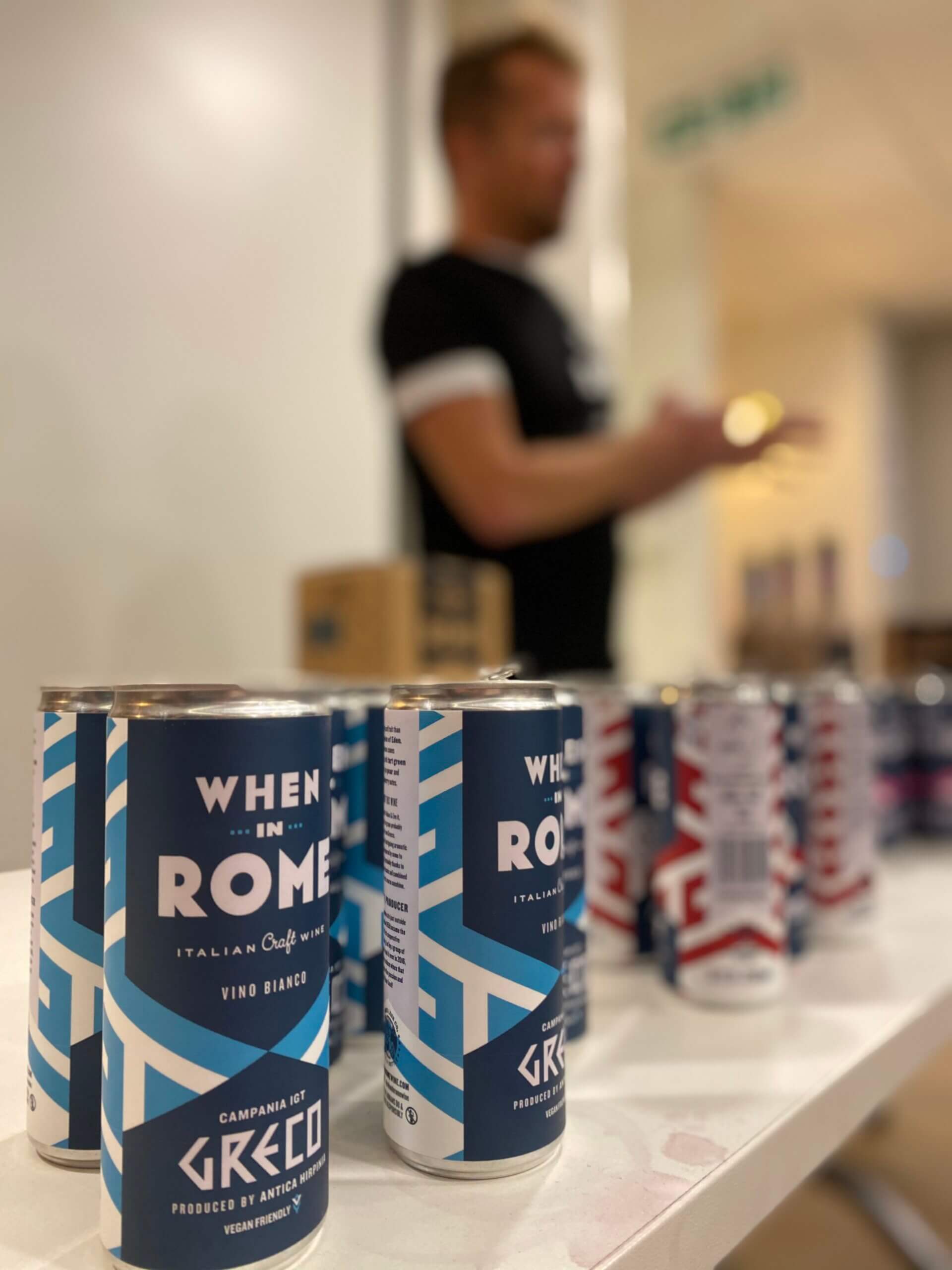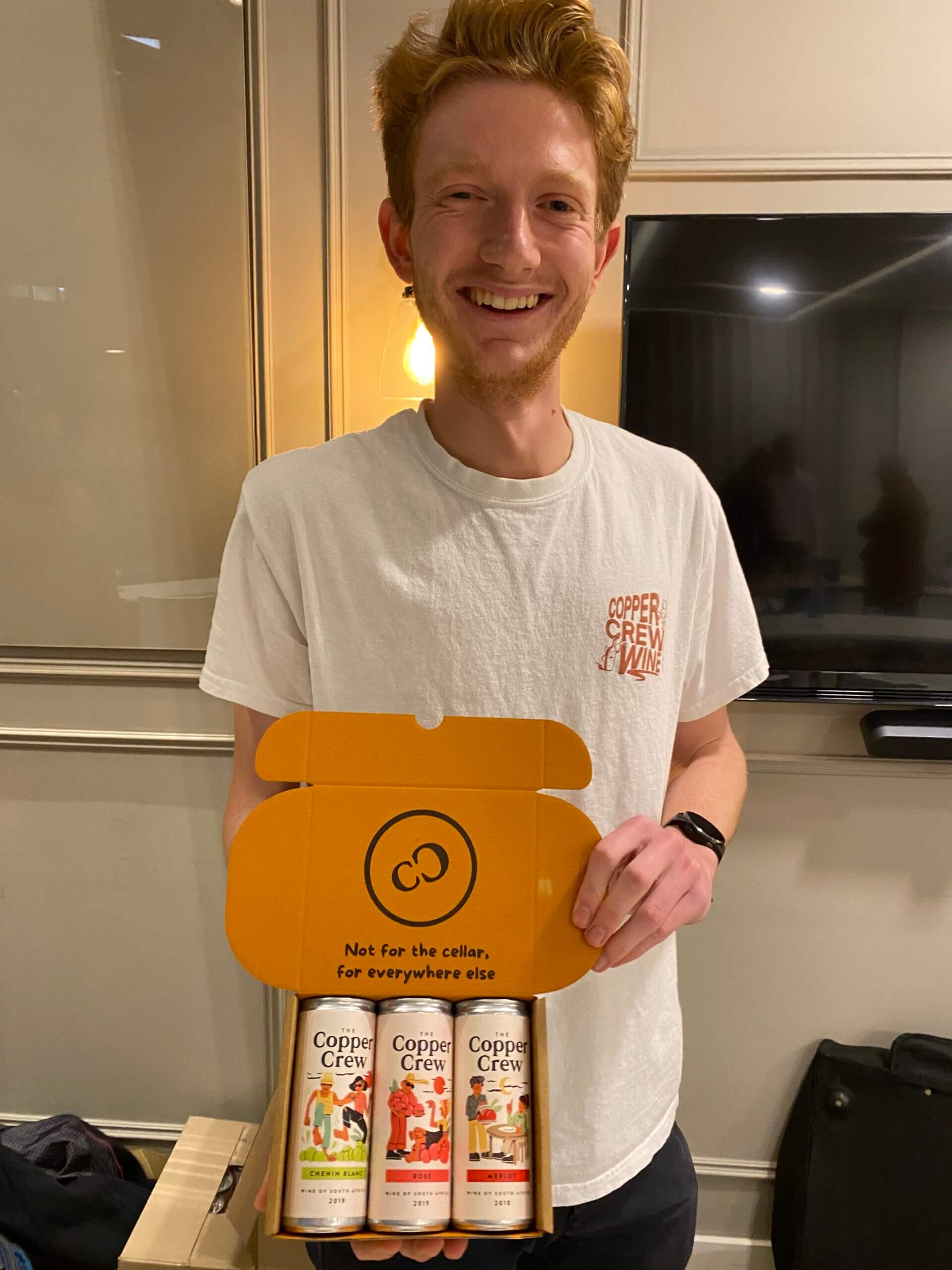- Season 3 Trailer
- Fake Booze
- English Wine: Now What?
- How to Buy Wine
- Bordeaux’s White Bank
- We’re Making Wine for Hope & Glory
- WTAF – Wine’s Alt Format Warriors
- The Oz Clarke EXCLUSIVE!
- Our Wines of the Year
- Investing in Wine
- A Drink to Dry
- Coffee Dorks Meet Wine Nerds
- Burgundy 2020 Brief
- Getting to know the Côtes de Bordeaux
- The New Champagne
- The Magical Science of Taste
- Boxing Clever?
- Georgia 4 Ukraine
- On Natural Wine
- Fake Booze 2
- Adventures in Dosage
- Tasting 1982 Bordeaux
- Armenia’s Ambition
- The World’s BIGGEST Wine Competition
- Wine from the Arab World
- Why Bother Matching Food and Wine?
- Wine 4 Curry
- Wine 4 Roast Lamb
Summary
‘Nobody thinks of wine as the villain in the climate story. But in fact we are.’ So says When In Rome’s Rob Malin, who spoke at COP26 about how shipping wine around the world in glass bottles leads to significant carbon emissions.
‘We have to take this seriously because if we don’t do something about climate change, you can forget a lot of your nice wine producing regions,’ says Oli Purnell of canned wine startup The Copper Crew.
WTAF stands, in this case, for Wine Traders for Alternative Formats (things like bag-in-box, pouches, bagnums, cans, kegs and plastic bottles). In this episode, we hear their impassioned case for building a more sustainable future for wine, citing figures showing glass bottles have a carbon footprint nearly ten times bigger than bag-in-box. Their secret weapon? Quality wines and new technology meaning no scrimping on drinking pleasure – while presenting a strong case for sustainability.
We also get a sense of the overview from packaging experts WRAP. And along the way, we talk about featuring climate impact on labels, new ways to recycle plastic, cost savings of alternative formats, wastage, carbon tax and…Nero d’Avola on cornflakes.
NB: To see the Running Order/Chapter Headings, simply click on the ‘bullet list’ icon on the green embedded player above.
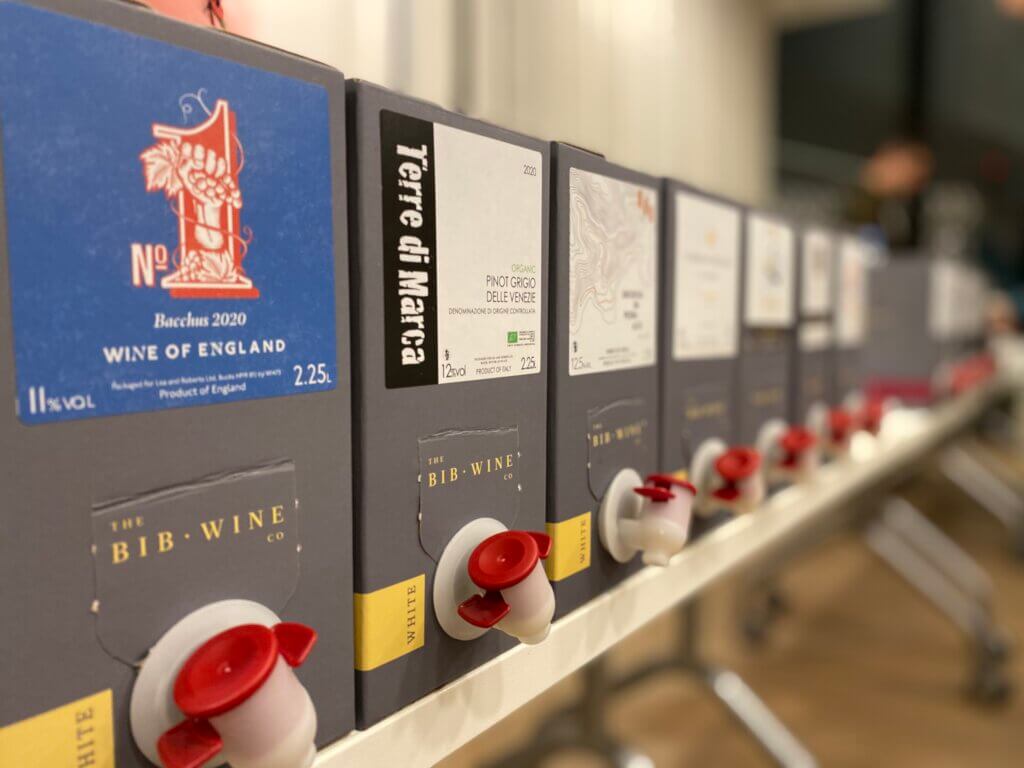
Starring
- Rob Malin, When in Rome
- Ollie Lea, The BIB Wine Company
- Rich Hamblin, More Wine
- Nik Darlington, Graft Wine
- Oli Purnell, The Copper Crew
- Adam Herriott, WRAP
L-R: Roberta Sergio of Quello, When In Rome, Copper Crew’s Oli Purnell
‘Alt Format’ Wine Recommendations
CAN: Banks Brothers Chardonnay No. 3, Hemel-en-Aarde Valley, South Africa (13%) – made by Newton Johnson, this is superb Chardonnay: succulent yet savoury with flavours of ripe red apples and toasted nut complexity. Dry, complex, serious – by far the best wine we’ve tried out of a can. Not cheap, mind… (£21 for three 250ml cans)
BAG-IN-BOX: BIB Wine Company Encostas da Pedra Alta Douro Branco 2019, Portugal (12.5%) – a characterful, complex white with plenty of flavour (apricots, peaches, wild herbs) and volume in the palate (it’s part barrel-fermented). A touch of rugged minerality makes it all the more engaging (£38.50 per 2.25-litre box)
BAGNUM: VinNaturo Dionisio de Nova Tank #10 Airen/Macabeo, Spain (12%) – an orange wine that’s not too orange, made by leaving the wine on its skins for three weeks then ageing for a year in amphora (then a bit more in the bag…) Glazed apricot and peach aromas, with a touch of ginger biscuit. Supple, firm, food-friendly, versatile. (£25 for 1.5 litre pouch)
CAN: The Canned Wine Co Grenache rosé No. 3 2020 (12.5%) – pale pink with a touch of spritz, this is a dry, elegant rosé with delicate flavours of pear, herbs and summer berries. Provence-lite, very moreish. (£16.50 for three 250ml cans)
BAG-IN-BOX: Azienda Tilli Montepulciano d’Abruzzo 2020 (13.5%) – a wine that’s just bursting with joy, packed full of vivid plum and blackberry flavours, positively teeth-staining but what the hell. You dive right in. Totally extrovert, utterly rewarding midweek red. (£33.50 for 2.25-litre box)
KEYKEG: Boas Quintas Dao Opta Tinto NV, Portugal – elegant plummy, earthy aromas with leather and floral hints. Juicy savoury fine palate, proper Dao, with a gently bittersweet finish. Grown-up.
CAN: The Copper Crew Merlot 2018, Western Cape, South Africa (13.5%) – elegant berry fruit with a touch of tobacco maturity. Serious stuff! Fine tannin, savoury, roasted pepper, dry and firm. Very grown-up. (£24.99 for six 250ml cans)
BAG-IN-BOX: La Cox AOC Blaye Cotes de Bordeaux (13%) – Chateau Peybonhomme is about 5 kms from Margaux and farms its 100% Merlot vines biodynamically. Warning: this one is pretty funky (bretty) with leathery dark fruit. The tannin is still supple, though, and the fruit lively. Savoury, complex, serious – a conversation wine. (£62.50 for 5-litre box)
BAG-IN-BOX: Chateau Couronneau Cuvee Clair de Lune Bordeaux 2019 (14.5%) – proper claret, with roasted pepper and dried plum aromas. The palate shows fine firm tannin, with classic proportions and good intensity. Touch of spice, relatively young still, serious and food-friendly. (£39.90 for 2.25-litre box)

